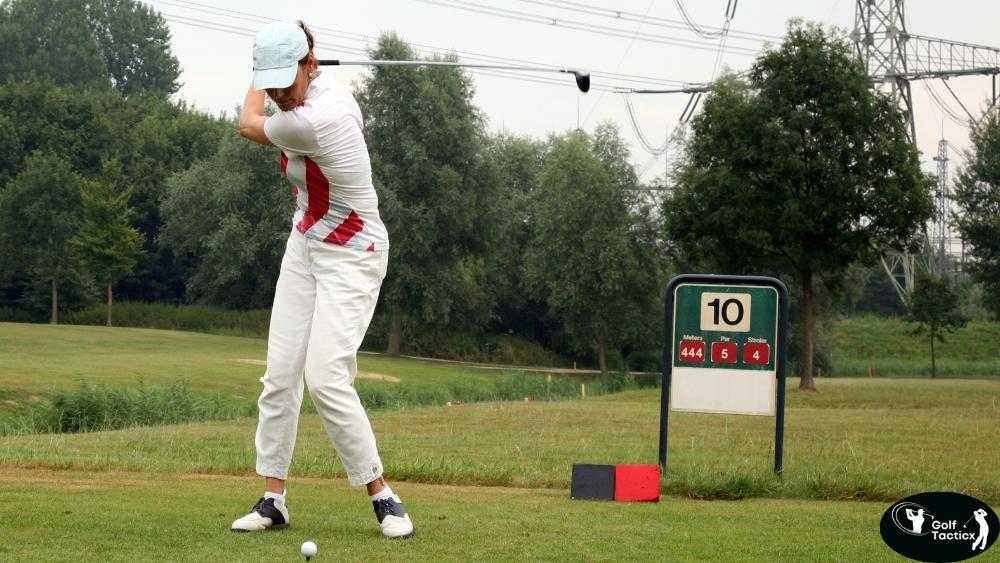In our previous post, we looked at Factors Influencing Your Decision to Be Aggressive or Conservative on the Golf Course. As a beginner golfer, understanding how to analyze pin positions is essential for improving your approach shots and increasing your chances of making birdies.
It also affects how you read greens, choose your landing areas, and control ball spin. Weather conditions, such as wind direction and speed, can further change the way you approach certain pin locations.
By learning to read the slope, surrounding hazards, and green firmness, you can avoid costly mistakes and give yourself the best scoring opportunities. Whether you’re preparing for a friendly match or a competitive round, taking time to analyze pin positions golf can make the difference between a safe par and a rewarding birdie.
Pin placement significantly influences your strategy, shot selection, and overall performance on the course. Let’s delve into how you can effectively analyze pin positions to enhance your game.
Understand the Importance of Pin Placement
Pin placement refers to the specific location of the hole on the green for each hole. It can vary daily and is a crucial factor in determining the difficulty of a hole. Golf course superintendents and tournament officials carefully select pin positions to balance the challenge and fairness of the course.
According to the USGA, they aim for a “fairly equal distribution of hole locations between left, right, middle, front, and back,” ensuring a mix of easy, moderate, and difficult placements.
Types of Pin Positions
Pin positions can be categorized based on their location on the green:
Front: Located near the front edge of the green, these pins require precise approach shots to avoid overshooting.
Middle: Centrally placed pins offer a balanced challenge, allowing for various shot strategies.
Back: Pins at the back of the green demand accurate distance control to prevent long putts or chips.
Left or Right: Pins positioned on the sides can be tricky, especially if guarded by hazards like bunkers or water.
Reading the Wind and Weather Impact
Wind and weather conditions can drastically affect how you approach pin positions. A strong headwind may force you to choose a more conservative target, while a tailwind can allow for a more aggressive shot. Rain or wet greens slow the ball’s roll, making certain pin locations safer or riskier. Learning to factor in these changing elements helps you adjust your club selection and shot shape effectively, making your pin position analysis more dynamic and realistic.
Common Pin Position Challenges and How to Overcome Them
| Pin Location | Typical Challenge | Strategy to Overcome |
|---|---|---|
| Front Left | Difficult uphill putts | Use a softer landing spot to hold ball |
| Back Right | Fast downhill greens | Aim short and left to avoid run-off |
| Center | Often crowded by other holes | Focus on precise distance control |
| Slope-Side | Breaks can be extreme | Study green contours closely |
This quick reference helps golfers anticipate problems and prepare smarter approaches depending on where the pin is placed.
Tracking Your Pin Position Performance Over Time
Keeping a record of your results based on different pin positions can provide valuable insights into your strengths and weaknesses. Whether through a simple journal or golf app, note how you perform on pins located at front, middle, back, left, or right of the greens.
Over time, this data can guide practice focus, helping you build confidence where you struggle and sharpen tactics where you excel. It turns pin position analysis from theory into actionable improvement.
Assessing the Green’s Characteristics
Before approaching a shot, evaluate the green’s features:
Slope and Contour: Identify areas where the green slopes toward or away from the hole. This knowledge helps in judging ball roll and break on putts.
Speed: Determine the green’s speed, as faster greens require more delicate touch, while slower greens may need firmer strokes.
Pin Accessibility: Some pin positions are more accessible than others. For instance, a front pin on a steeply sloped green can be more challenging than a back pin on a flatter surface.
Strategic Shot Selection
Once you’ve assessed the pin position and green characteristics, plan your approach:
Club Selection: Choose a club that allows you to land the ball in a favorable area, considering the pin’s location.
Shot Trajectory: Decide whether a high, soft shot or a low, running shot is more appropriate based on the pin’s position and surrounding hazards.
Risk Assessment: Evaluate the risks of going directly for the pin versus aiming for a larger, safer area of the green.
Practice Distance Control
Accurate distance control is vital for approaching the pin effectively:
Know Your Yardages: Be aware of how far you hit each club under various conditions. This knowledge allows for precise shot planning.
Use Rangefinders: Utilize rangefinders or GPS devices to measure distances accurately, aiding in club selection and shot planning.
Practice Different Lies: Practice shots from various lies and slopes to simulate real-course conditions, enhancing your adaptability.
Manage Course Conditions
Environmental factors can affect your approach:
Wind: Adjust your shot selection and club choice based on wind direction and strength.
Weather: Wet conditions can make greens slower and affect ball behavior, while dry conditions can have the opposite effect.
Temperature: Colder temperatures can reduce ball distance, while warmer temperatures can increase it.
Mental Preparation
A focused and calm mindset enhances decision-making:
Visualization: Mentally rehearse your shot, visualizing the ball’s flight and landing spot.
Stay Positive: Maintain a positive attitude, focusing on executing your plan rather than potential outcomes.
Adaptability: Be prepared to adjust your strategy based on changing conditions and unexpected challenges.
Post-Shot Analysis
After each shot, evaluate your performance:
Review: Assess what went well and what could be improved.
Learn: Use each shot as a learning experience to refine your approach for future rounds.
Adjust: Modify your strategy as needed, based on your analysis and the course conditions.
Conclusion
Effectively analyzing pin positions is a skill that combines course knowledge, strategic planning, and mental focus. By understanding the nuances of each green and planning your approach accordingly, you can enhance your chances of making birdies and improving your overall game. Remember, each round offers opportunities to learn and adapt, so embrace the process and enjoy the journey.
As you gain more experience, you’ll start recognizing patterns in pin placements—such as common Sunday positions or the tendency for certain greens to favor specific angles. Practicing different approach shots during your rounds or practice sessions can help you prepare for both safe and aggressive plays.
Don’t forget to consider factors like elevation changes, surrounding bunkers, and even the speed of the greens on that particular day. Mastering this awareness will make your decision-making more instinctive and your scoring more consistent.
In the next post, we’ll break down how to approach Risk-Reward Shots in Tournament Golf, giving you the tools to make smarter decisions when the stakes are high.
















Leave a Reply